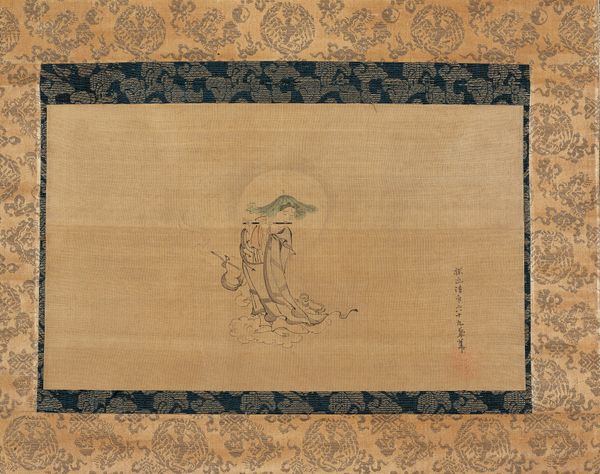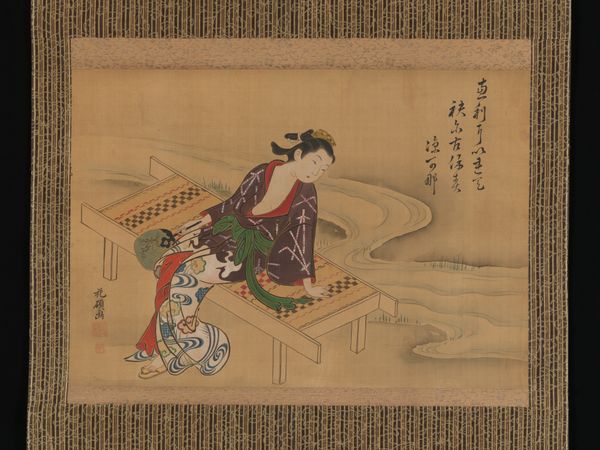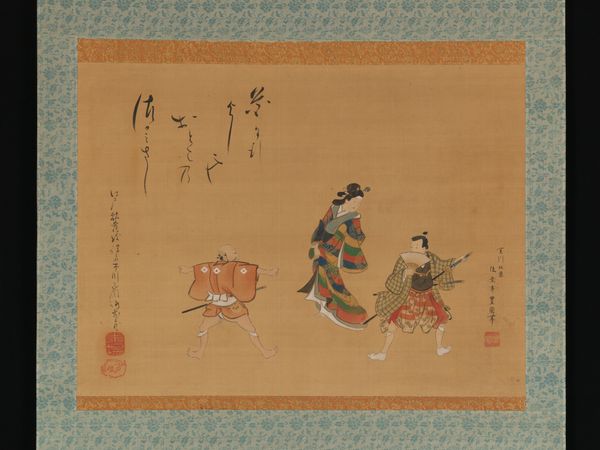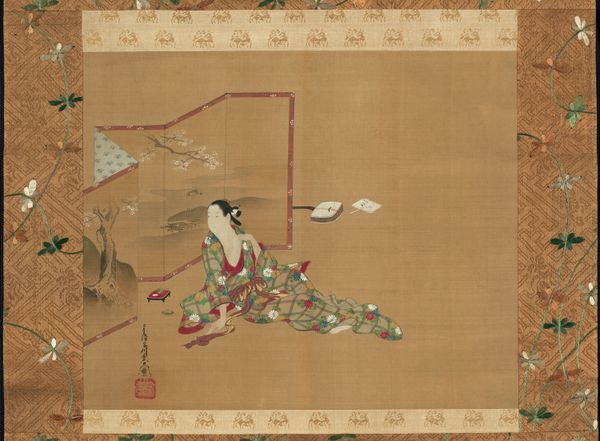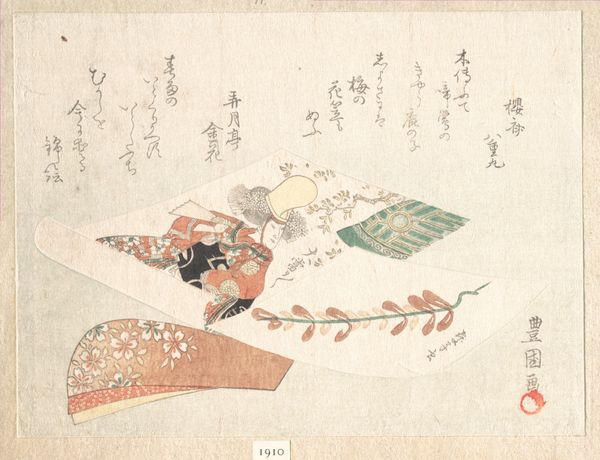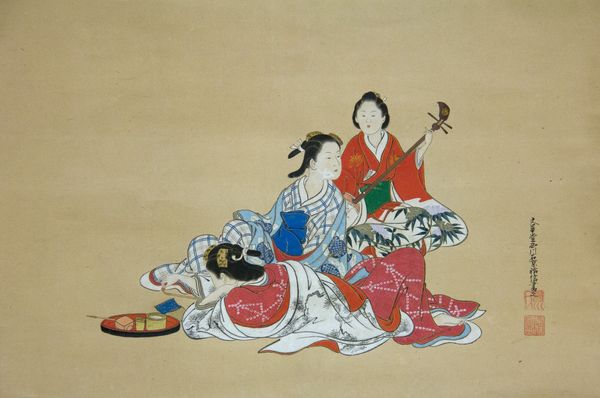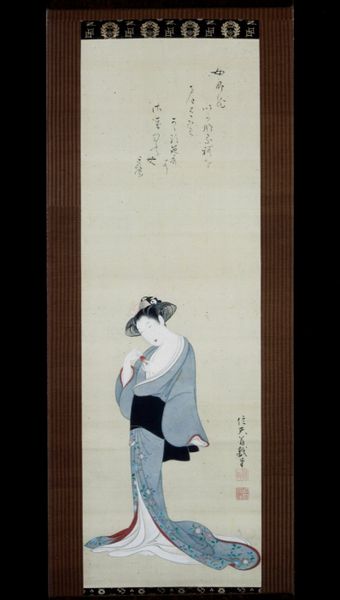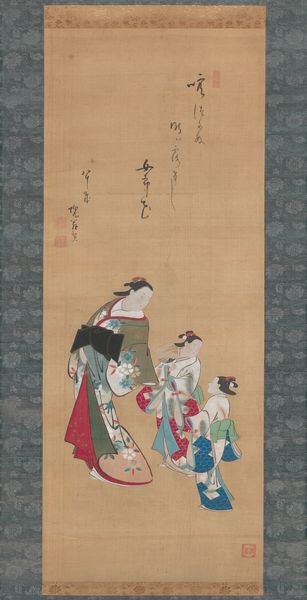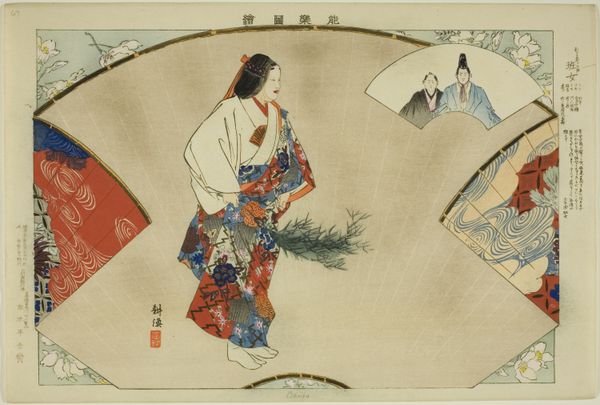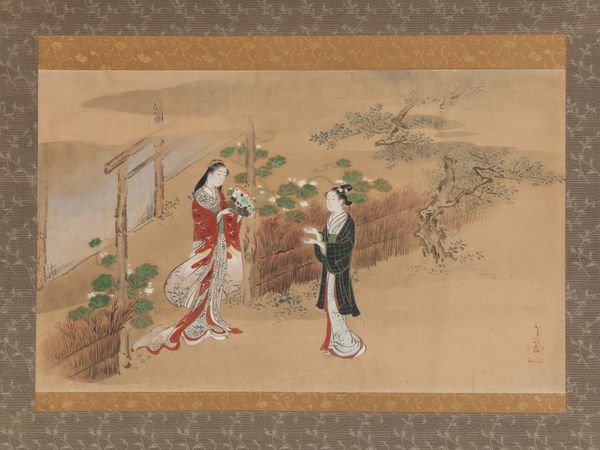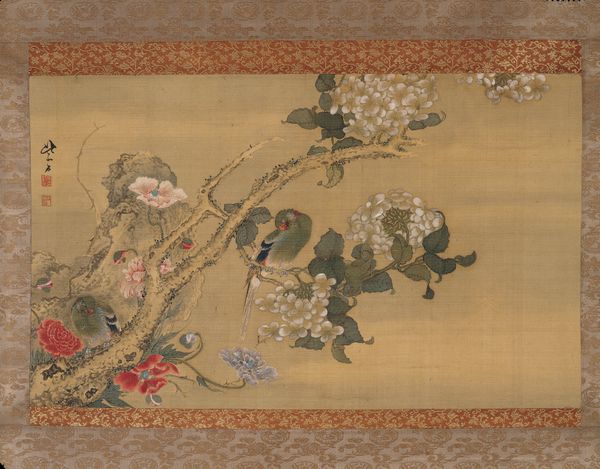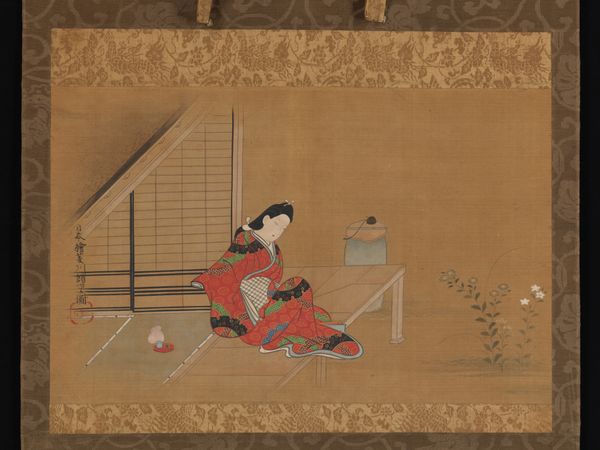
painting, ink, woodblock-print
#
portrait
#
painting
#
asian-art
#
ukiyo-e
#
figuration
#
ink
#
woodblock-print
Dimensions: Image: 11 1/4 × 14 3/4 in. (28.6 × 37.5 cm) Overall with mounting: 44 3/4 × 19 3/4 in. (113.7 × 50.2 cm) Overall with knobs: 44 3/4 × 21 5/8 in. (113.7 × 54.9 cm)
Copyright: Public Domain
Editor: Nishikawa Sukenobu's "Woman and Attendant," a painting and woodblock print from around 1700-1750. It's so delicate; the colors are subtle, but the patterns on the kimonos feel so alive. How do you interpret this work, considering its historical context? Curator: It's tempting to see this as a simple, elegant scene, but let's consider the power dynamics at play. These images of women, popular in the ukiyo-e tradition, weren’t just aesthetic objects. How might the male gaze, prevalent in that era, have influenced the portrayal of women and their roles? Are they simply figures to be admired, or do they represent something more complex? Editor: That's a good point. The woman with the fan does seem to be positioned as the main subject, almost like she's on display. Curator: Exactly. And who were these women? Were they courtesans, performers, or members of the elite? Understanding their social standing shapes how we perceive the painting. Their clothing, posture, even the presence of an attendant– all of this conveys a specific narrative. How does knowing that the 'floating world' was an escape, even a protest against strict societal norms, shift your perspective? Editor: It definitely complicates things. I’m starting to see the painting as a negotiation between artistic expression and social commentary. Curator: Precisely. By examining the cultural forces that shaped Sukenobu's work, we can reveal hidden meanings and gain a deeper understanding of the complex roles women held in 18th-century Japan. Editor: I never considered the political undercurrents within something so seemingly serene. Thanks for making me look at it with a new lens. Curator: My pleasure. It is by probing those societal structures that the artwork can truly speak to us.
Comments
No comments
Be the first to comment and join the conversation on the ultimate creative platform.

